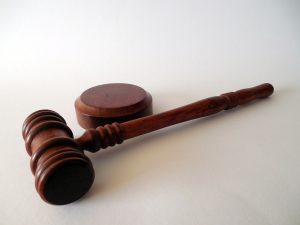Digital Compliance Framework: Tech Law Standards
In today’s digital landscape, technology is rapidly evolving and businesses are increasingly relying on digital solutions to streamline their processes and reach a wider audience. However, with this digital transformation comes the need to ensure compliance with various legal requirements and regulations. This is where a Digital Compliance Framework, or DCF, becomes essential. A DCF is a set of guidelines and standards that help businesses comply with technology laws and regulations. In this article, we will delve into the importance of a DCF, its key components, and how businesses can adopt it to ensure compliance with tech law standards. 
The Need for a Digital Compliance Framework
With the increasing use of technology in business operations, it’s no surprise that governments and regulatory bodies have stepped in to ensure the protection of personal data and the fair use of technology. Data breaches, cyber-attacks, and privacy concerns have become all too common, emphasizing the need for businesses to have a robust digital compliance strategy in place. A DCF not only helps businesses stay in line with regulations but also builds trust with customers by emphasizing their commitment to protecting their data and complying with high standards of technology use.
Key Components of a Digital Compliance Framework
Before diving into the nuts and bolts of a DCF, it’s essential to highlight its key components. These are crucial elements that businesses must pay attention to when developing and implementing their digital compliance framework.
1. Regulatory Requirements
The first step in creating a DCF is to understand the legal requirements that apply to your business. This includes laws related to data privacy, intellectual property, online marketing, and security. Depending on the industry you operate in and the type of data you collect, you may need to comply with specific regulations such as the General Data Protection Regulation (GDPR) in Europe or the Health Insurance Portability and Accountability Act (HIPAA) in the United States.
2. Risk Assessment
A key component of any compliance framework is a thorough assessment of potential risks. This involves identifying the potential threats and vulnerabilities that could compromise your organization’s compliance with tech laws. A risk assessment helps you prioritize your compliance efforts and allocate resources accordingly.
3. Policies and Procedures
Creating and implementing policies and procedures is an essential aspect of a DCF. This includes developing guidelines for data handling and protection, incident response, data breach notification, and employee training. Having clear policies and procedures in place ensures that everyone in the organization is aware of their role in complying with tech laws.
4. Data Privacy and Security Measures
Ensuring the privacy and security of sensitive data is a crucial element of a DCF. This includes implementing technical and organizational measures to protect data from unauthorized access or use. Some of the measures businesses can take to ensure data privacy and security include encryption, firewalls, and regular data backups.
Adopting a Digital Compliance Framework
Now that we have discussed the key components of a DCF, let’s talk about how businesses can adopt and implement it effectively.
1. Consult with Legal Experts
The first step in adopting a DCF is to seek legal counsel to ensure that you are complying with all relevant laws and regulations in your industry and location. This will help organizations avoid any legal pitfalls and ensure their DCF is comprehensive and effective.
2. Designate a Compliance Officer
To ensure a smooth and hassle-free compliance process, it’s important to designate a compliance officer within the organization. This person will be responsible for overseeing and enforcing the DCF, conducting regular risk assessments, and handling any incidents that may arise.
3. Regular Training and Awareness
Creating a culture of compliance within the organization is crucial. This can be achieved by conducting regular training and awareness programs for employees. Ensuring everyone in the organization understands their role in upholding tech law standards is key to successful adoption of the DCF.
4. Continuous Monitoring and Updates
A DCF is not a one-time task; it requires continuous monitoring and updating to ensure its effectiveness. Regular audits and reviews should be conducted to ensure the framework is up to date with any legal changes and evolving technology.
Conclusion
In today’s highly regulated digital landscape, having a solid Digital Compliance Framework is no longer a choice but a necessity for businesses. It not only ensures compliance with tech law standards but also builds trust with customers and strengthens the overall security and privacy of an organization. By understanding the key components and adopting good practices, businesses can develop an effective DCF that will help them navigate the complex world of digital compliance.











